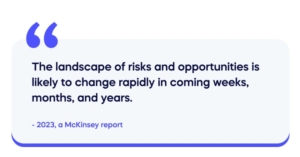In today’s digital world, software users are used to having intuitive digital experiences. There’s no mystery to consumer electronics: software from Apple, Google, and social media platforms help users do amazing things without technical expertise.
However, that doesn’t mean the world has become any simpler. In many industries, this is where technical writers step in to explain the most challenging aspects of processes and techniques. In technology companies, manufacturing, healthcare, financial planning, and more, technical documentation is essential for safe and effective user experiences.
In this article, we’ll look at the most important technical writing examples that help provide value to users and customers. Whether you are at the start of a technical writing career or in charge of customer experiences, these examples will show what your customers need.
Here’s what you’ll get in this article:
- We’ll start by looking at a definition of technical writing.
- Then, we’ll examine the twelve key forms of technical writing this year.
- We’ll also assess some key tools you need to make technical writing easier.
- Finally, we’ll look at some of the alternatives to technical writing.
Technical writing is an important part of the customer support experience. And even if you believe that the future of work is with generative AI, technical writing will be an important skill for future generations.
What is technical writing?
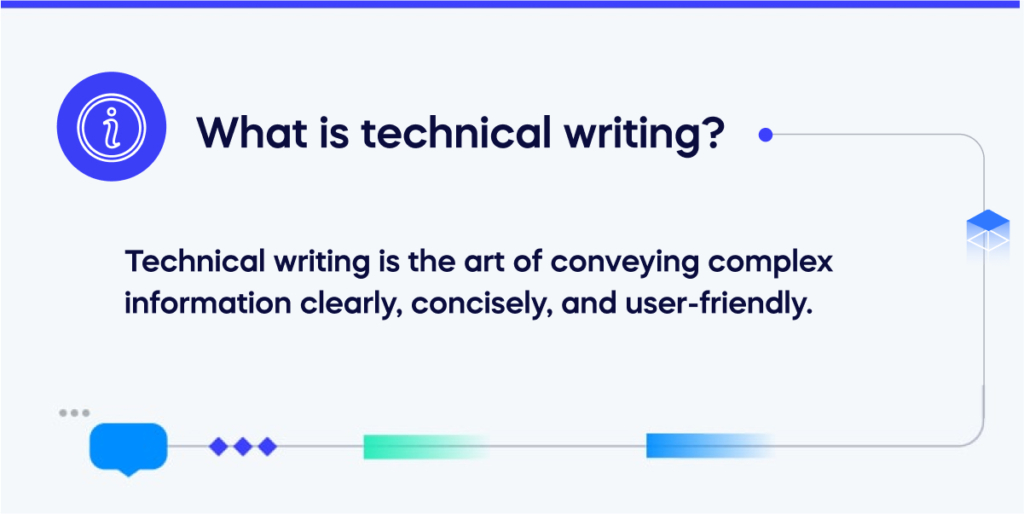
Technical writing is the art of conveying complex information clearly, concisely, and user-friendly. In the words of the UK government’s careers guidance, technical writers take “a user-centered approach to making complicated technical concepts easier to understand for a specialist audience.” It involves creating technical documents, such as user guides, manuals, and instructions, that provide explanations and insights on technical subjects.
Technical writing aims to help users understand and use products, systems, or processes effectively, making complex concepts accessible and promoting efficient communication between experts and non-experts.
It is a very different discipline from creative writing, and the best technical writers do not necessarily come from a background in academic training. Good technical writing does not need expressive descriptions or persuasive language: it just needs to be clear, accurate, and useful.
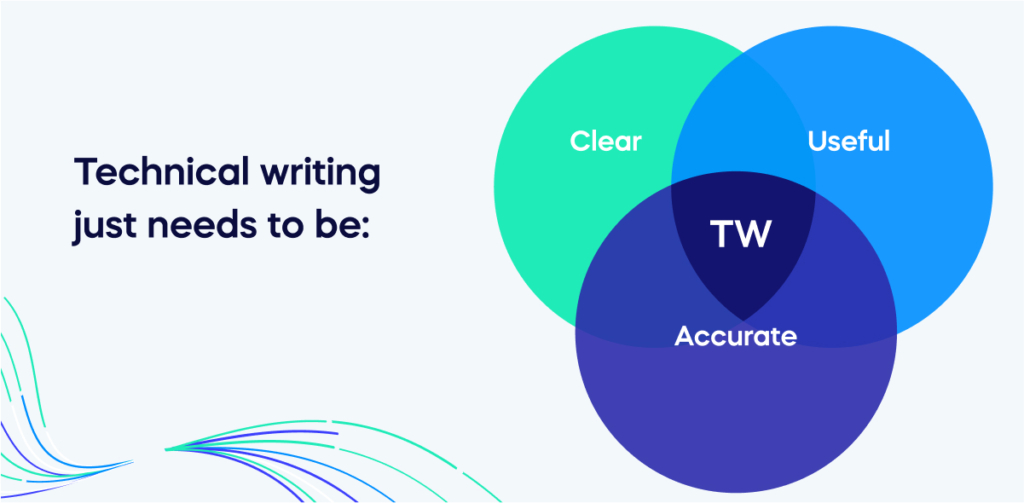
Technical writing is a great field to break into. There are plenty of good training options out there.
The twelve forms of technical writing that you need to know
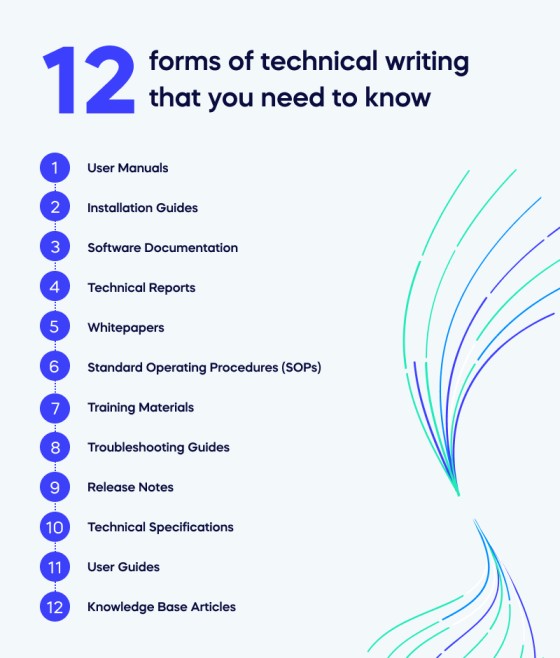
In this section, we will introduce the twelve main technical writing examples that companies use today.
If you’re trying to improve your technical writing skills, you must ensure you understand all of these forms. On the other hand, if you’re running a business, you should think about how to use some (or all) of these types of writing.
- User Manuals
User manuals are an essential form of technical writing that individuals need to know about due to their widespread presence and importance in various industries. User manuals provide users with crucial instructions, guidelines, and information on effectively and safely operating a product or utilizing a software application. They bridge the product or software’s technical complexities and the end-user’s understanding.
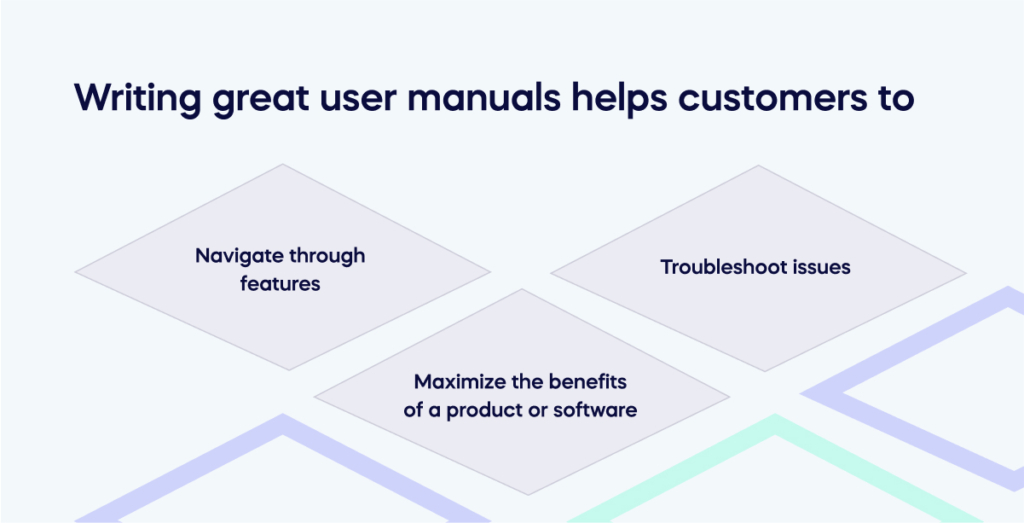
Writing great user manuals helps customers to navigate through features, troubleshoot issues, and maximize the benefits of a product or software. This technical writing example is less common today than it once was, but it’s still essential for many applications.
- Installation Guides
Technical writers need to understand installation guides because they are crucial in ensuring the successful and accurate installation of products or software applications. Installation guides provide step-by-step instructions, procedures, and requirements for properly setting up and configuring a system or software.
In this writing, technical writers convey information about system requirements, dependencies, compatibility issues, and troubleshooting steps. These guides help users navigate the installation process smoothly, reduce errors, and ensure efficient deployment of products or software applications.
- Software Documentation
Software documentation is a useful form of technical writing because it provides users with essential information, instructions, and guidance on effectively and efficiently using software applications. It serves as a comprehensive reference that helps users navigate the software’s features, settings, and functionalities, troubleshoot issues, and maximize the benefits of the software.
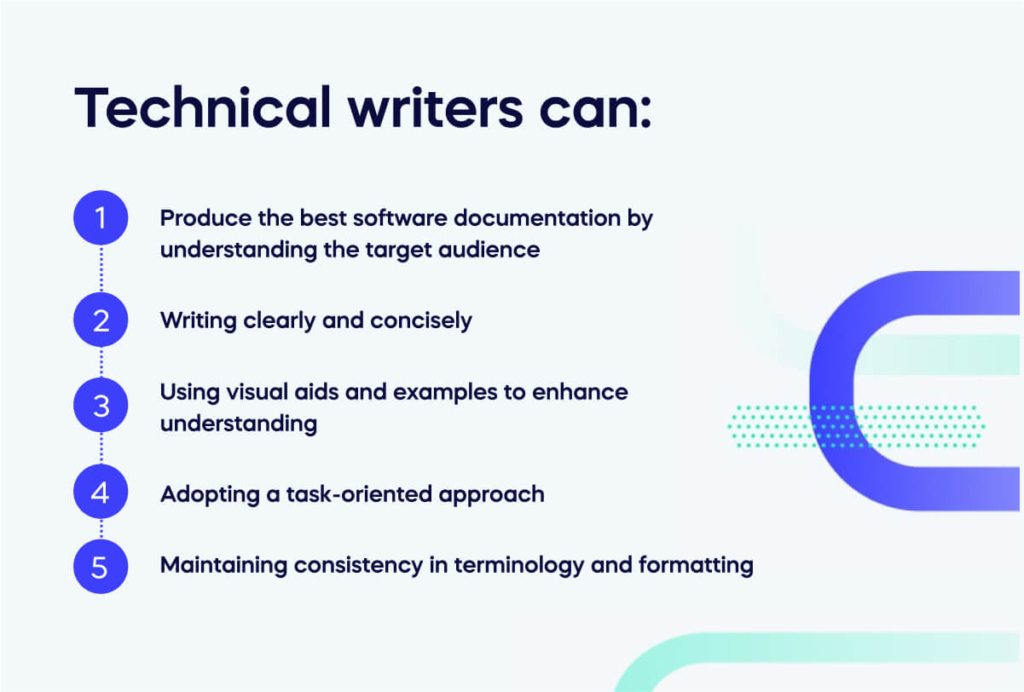
Technical writers can produce the best software documentation by understanding the target audience, writing clearly and concisely, using visual aids and examples to enhance understanding, adopting a task-oriented approach, and maintaining consistency in terminology and formatting.
- Technical Reports
Technical reports are a useful form of technical writing as they allow for the detailed and structured communication of complex information, research findings, and analyses. They provide a comprehensive overview of a particular project, study, or investigation, presenting data, methodologies, and conclusions clearly and organized. Technical reports are valuable resources for decision-makers, stakeholders, and professionals in various fields.
When it comes to technical reports, clarity is the most important quality. A good technical report will have a clear structure, concise language, appropriate visual aids, and excellent editing.
- Whitepapers
White papers are effective technical writing because they offer in-depth analysis, insights, and solutions to complex problems or emerging technologies. They serve as authoritative and persuasive documents that comprehensively understand a specific topic, presenting research, data, and evidence to support claims or recommendations.
Technical writers can produce excellent white papers by conducting thorough research to gather relevant data and industry insights, employing clear and engaging writing techniques to make the content accessible and compelling, and structuring the document logically and coherently, ensuring a smooth flow of information.
- Standard Operating Procedures (SOPs)
Standard Operating Procedures (SOPs) are effective technical writing because they provide detailed instructions and guidelines for carrying out specific tasks or processes consistently and efficiently. SOPs ensure that employees have clear direction on performing their duties, maintaining quality standards, and adhering to regulatory requirements. They help minimize errors, improve productivity, and promote a safe working environment.
- Training Materials
Training materials are an important form of technical writing, providing comprehensive and structured information to facilitate learning and skill development. They are crucial in transferring knowledge and ensuring consistent training across individuals and teams.
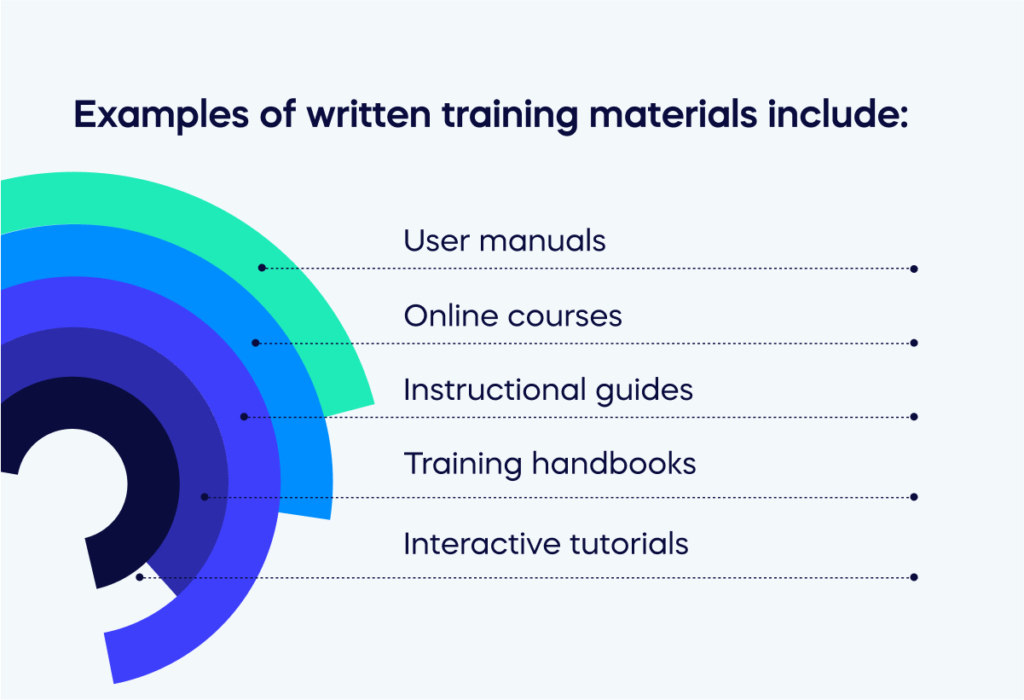
Examples of written training materials include user manuals, online courses, instructional guides, training handbooks, and interactive tutorials. These materials offer step-by-step instructions, demonstrations, and exercises that empower learners to acquire new skills, understand complex concepts, and effectively utilize products or software applications.
- Troubleshooting Guides
Troubleshooting guides are an important form of technical writing as they assist users in resolving issues and overcoming challenges related to products or software applications. These guides offer systematic steps, explanations, and solutions for diagnosing and addressing common problems.
By providing clear and concise instructions, technical writers empower users to troubleshoot and resolve issues independently, reducing the need for extensive technical support. Troubleshooting guides enhance user experience, minimize downtime, and increase user satisfaction.
- Release Notes
Release notes are useful writing as they provide essential information about software updates, bug fixes, new features, and improvements to users and stakeholders. They help users stay informed about the changes in a software release and understand how it impacts their usage.
Expert technical writers can support the creation of release notes by effectively summarizing the changes clearly and concisely, organizing the information in a user-friendly format, and ensuring that the release notes are accurate, easy to understand, and accessible to users with varying levels of technical expertise.
- Technical Specifications
Technical specifications are a convenient type of writing for users as they provide comprehensive details about a product or system’s functionality, features, and requirements. They serve as a valuable reference, enabling users to understand a product’s technical aspects and capabilities. The best technical writers support the creation of technical specifications by presenting the information in a clear, organized, and user-friendly.
They ensure the specifications are accurate, complete, and aligned with industry standards. Technical writers’ expertise ensures that technical specifications are an effective tool for users to make informed decisions and effectively engage with the product or system.
- User Guides
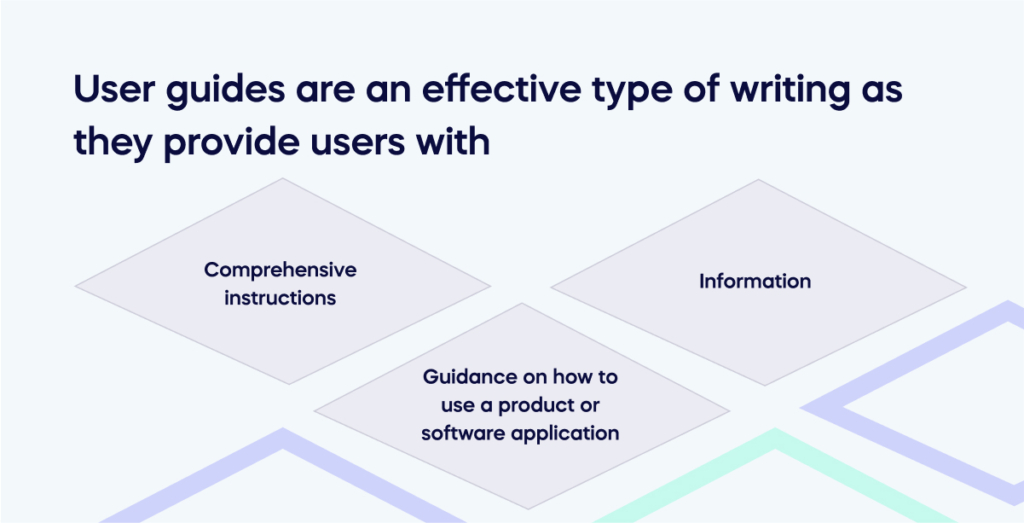
User guides are an effective type of writing as they provide users with comprehensive instructions, information, and guidance on how to use a product or software application. They serve as a reliable resource, enabling users to understand the features, functionalities, and best practices associated with the product.
- Knowledge Base Articles
Knowledge base articles are a “must-have” type of writing as they provide a centralized repository of valuable information, troubleshooting tips, and solutions to common user problems. They serve as a self-service resource, empowering users to find answers to their questions and resolve issues independently.
Hiring a great technical writer is important for creating knowledge base articles because they have the expertise to transform complex technical concepts into clear and concise content. A skilled technical writer can organize the articles effectively, ensure consistency and accuracy, and employ user-friendly language to enhance comprehension.
The technical writing tools you’ll need
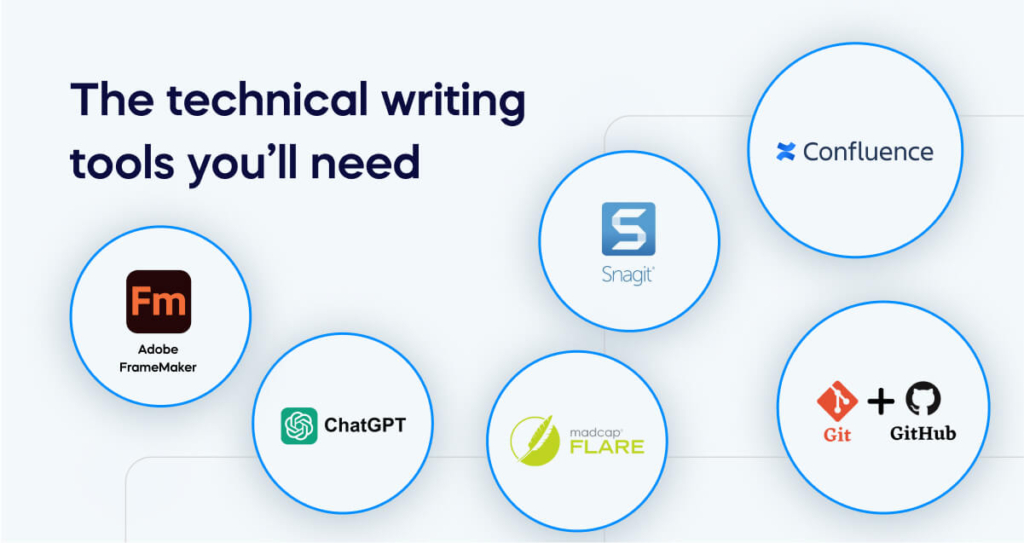
To take your writing to the next level, you need all the help you can get to create the best results.
Today, the right software tools offer various features and capabilities to streamline the technical writing process, enhance collaboration, and produce high-quality documentation. The choice of tool often depends on specific requirements, preferences, and the nature of the technical writing project.
However, the following five packages are handy:
- Adobe FrameMaker: A professional authoring and publishing tool specifically designed for technical documentation, with advanced features for large documents and structured content.
- Confluence: A collaborative wiki-based platform that allows teams to create, organize, and share technical documentation, making it easy for multiple contributors to collaborate.
- Snagit: A screen capture and image editing tool that enables technical writers to capture screenshots, annotate images, and create visual aids for documentation.
- Git and GitHub: Version control systems that help manage revisions and collaboration on technical documentation, allowing multiple contributors to work on the same documentation project.
- MadCap Flare: A powerful authoring and publishing tool that supports single-source publishing, content reuse, and multi-channel output, including online help systems and PDFs.
- ChatGPT: Ok, we had to mention it. In 2023, AI applications and developments will be moving at break-neck speed. Current language models cannot replace technical writers: software like ChatGPT and Jasper can only replicate existing models and cannot check the precise technical details. Early in 2023, a McKinsey report clarified: “The landscape of risks and opportunities is likely to change rapidly in coming weeks, months, and years.” Keep up with the latest developments – and keep building technical writing skills.
Technical writing alternatives for the modern workplace
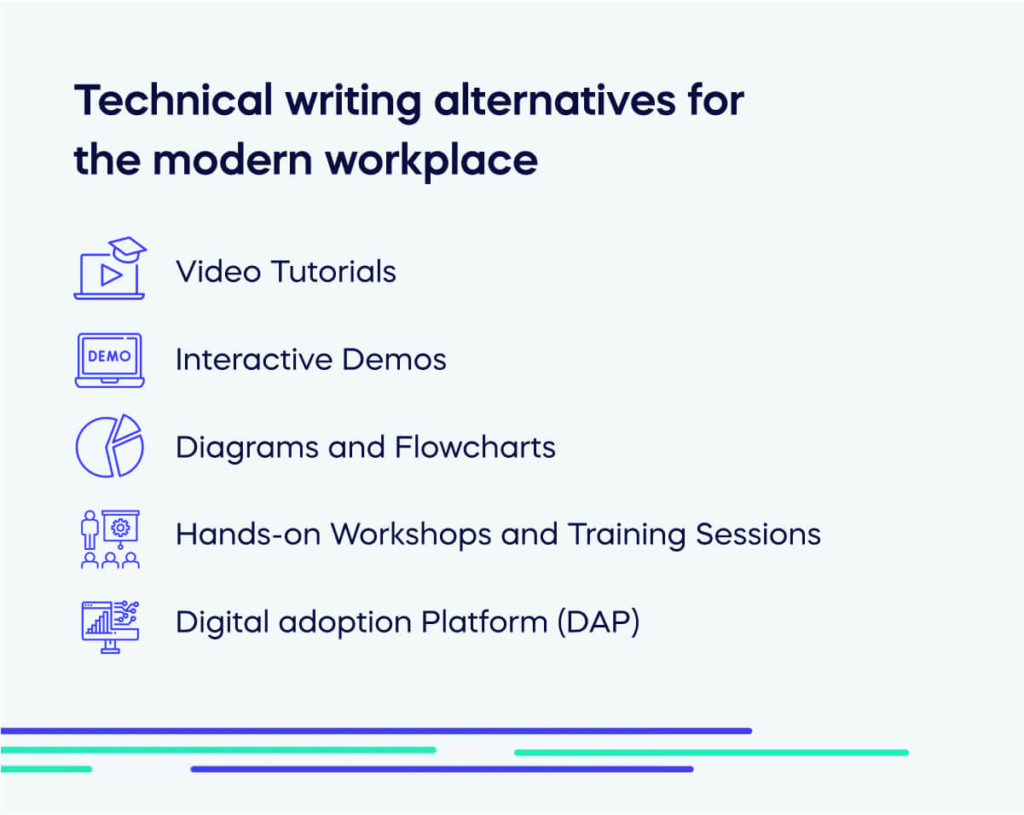
These days, technical writing is the only way to deliver clear instructions and documentation to your product’s users. Some alternatives will help you streamline support to employees and customers alike.
If technical writing isn’t doing everything you need, try one of these methods.
- Video Tutorials: Instead of written documentation, video tutorials provide step-by-step instructions visually, making it easier for users to follow along.
- Interactive Demos: Interactive demos allow users to interact with software or product in a simulated environment, guiding them through various features and functionalities.
- Diagrams and Flowcharts: Diagrams and flowcharts visually represent processes, workflows, or system architectures, making it easier for users to understand complex systems or relationships.
- Hands-on Workshops and Training Sessions: Hands-on workshops and training sessions allow users to learn through practical exercises and interactive sessions, facilitating hands-on experience and learning.
- Digital adoption Platform (DAP): An integrated Digital Adoption Platform like WalkMe can deliver solutions where it matters most. Even in the most difficult software, employees get in-app experiences that solve their problems at the point of use.
Get your technical writing in order
Regarding technical work, your writing style has to fit the task. Whether that’s user instruction manuals, employee handbooks, manufacturing guidelines, or any kind of technical communication, it’s essential to have good practice in clear, precise, and well-structured writing.
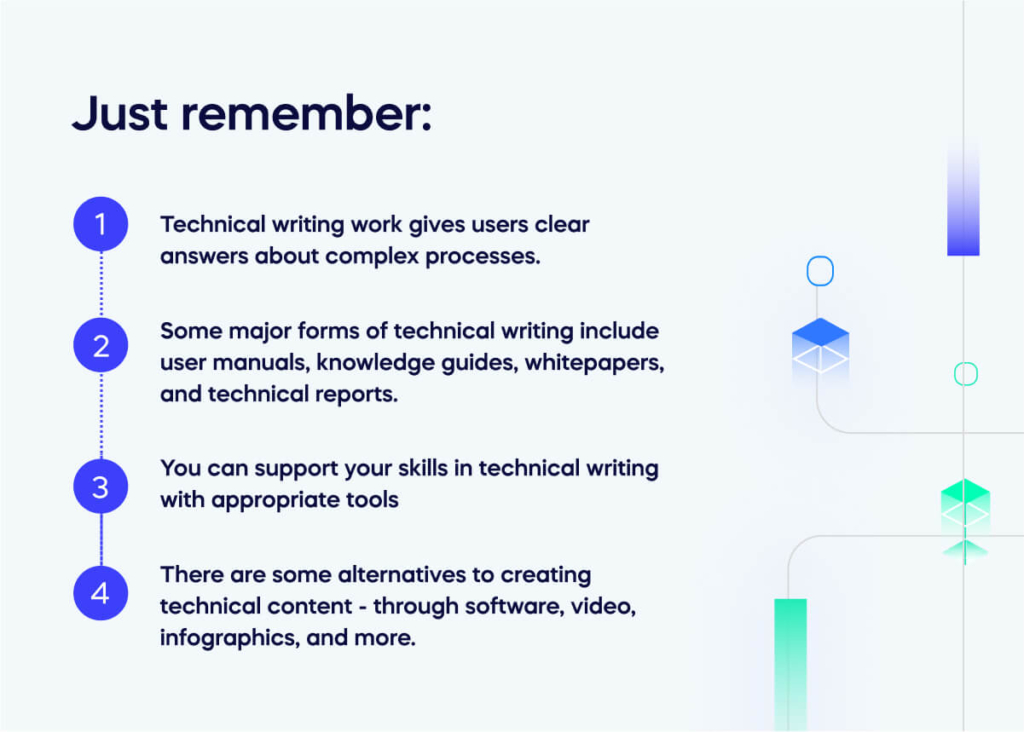
Just remember:
- Technical writing work gives users clear answers about complex processes.
- Some major forms of technical writing include user manuals, knowledge guides, whitepapers, and technical reports.
- You can support your skills in technical writing with appropriate tools
- There are some alternatives to creating technical content – through software, video, infographics, and more.
Overall, technical writing may just be one of the tools you can access for moving staff along their digital learning curve. But the best technical writing can give your staff and customers a clear compass for how to succeed.



